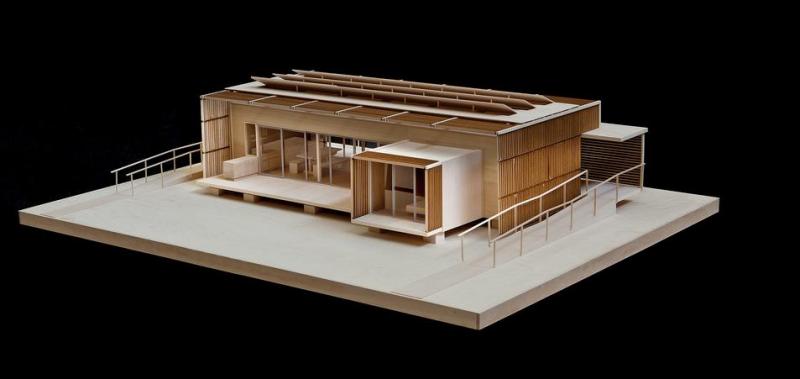Team Florida Takes “Sunshine State” Moniker Seriously
Friday, July 8, 2011By April Saylor
In honor of the U.S. Department of Energy Solar Decathlon—which challenges 20 collegiate teams to design, build, and operate solar-powered houses that are cost-effective, energy-efficient, and attractive—we are profiling each of the 20 teams participating in the competition.

Team Florida’s design model of the FLeX House (Credit: All Commercial Photography/U.S. Department of Energy Solar Decathlon)
It only seems natural that the Sunshine State would combine the power of universities from across the state to bring its solar-powered, energy-efficient house to the U.S. Department of Energy Solar Decathlon on the National Mall this fall.
Unlike most teams in the competition—which are composed of participants from one or, less often, two or three schools—Team Florida is made up of members from four Sunshine State universities: the University of South Florida, Florida State University, the University of Central Florida, and the University of Florida. The team was conceived in the belief that the building industry cannot function effectively without close collaboration among groups of professionals representing different fields of expertise. With this in mind, Team Florida says it is utilizing the brainpower of eight departments of the respective schools—and all of this collaborative expertise is giving Team Florida a unique perspective on its design.
Many of the entries to the competition address unique challenges related to regional climate or locations that do not receive much sun. Team Florida’s FLeX House, on the other hand, was designed specifically for hot, humid climates and sunny places such as those comparable to central Florida. But that doesn’t make its job any easier.
Building a house adapted to Florida’s hot, humid climate is a challenge. Team Florida’s goal is to utilize design approaches that demonstrate the best balance of efficiency, sustainability, and economics. The FLeX House is meant to illustrate Team Florida’s philosophy that “sustainable design practices are inherently good design practices.”
As for the architectural arrangement of the house, the team says it designed it to be as flexible as possible (hence, the name FleX House). This flexibility allows the house to take on different configurations by using movable components that expand or contract the living spaces—which is supported by the continuity of the flooring, ceiling, and interior wall materials.
In addition to their cross-university teamwork, members of Team Florida are working with industry partners to design an affordable building envelope that meets ultra-efficient energy use building criteria. The team says that the house’s “envelope” (the windows, walls, roofs, and foundations) was designed to work equally well throughout the year by “combining an optimum level of insulation for temperature extremes, resistance to air infiltration, transparency for daylight, and flexibility”—a common challenge to homebuilders in central Florida.
After the competition, the FLeX House will become the Zero Energy House Learning Center to raise awareness, demonstrate building science principles, highlight sustainable construction strategies, utilize Florida-friendly landscaping, and illustrate Florida WaterStar practices associated with “climatically responsive” homes.
To follow the team’s progress on FLeX House, visit its blog and official Facebook page or follow it on Twitter at @FLeX_House.
April Saylor is an online content producer and contractor to the Department of Energy Office of Public Affairs.
Tags: Solar Decathlon, Solar Decathlon 2011, Team Florida, Teams
